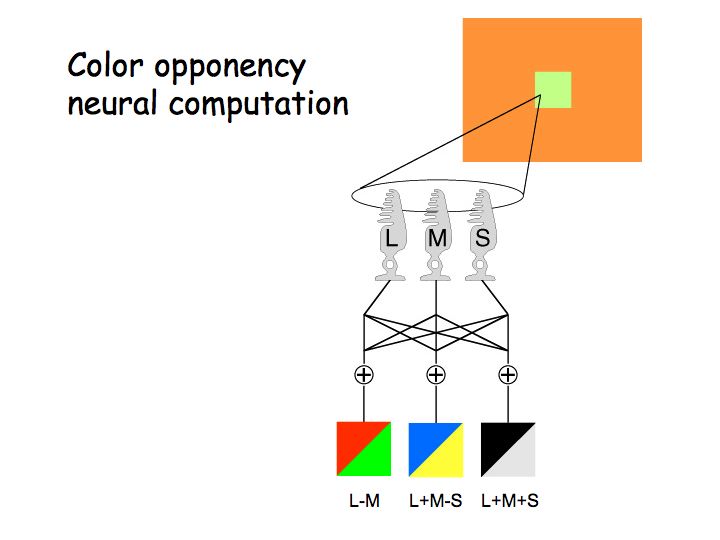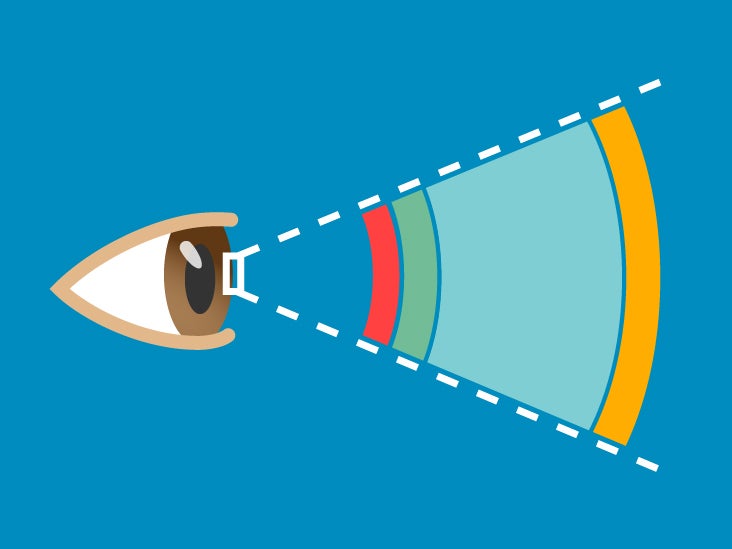Describe How We See Color Using the Opponant Process Coding
We instruct our students to color-code each sentence type summary connections source to ensure that they have remembered to include each and to assess each against the rubric that they will be graded upon and finally to assess against the model examples that they were provided that are likewise color-coded. Coding in Color has been brought together by three Carl Hayden High School Alumni who believe in the importance of diversity in technology.

Color And Depth Perception Introduction To Psychology
The color-coding process which was first implemented in 1997 was put in place to streamline workflow for technicians and front office staff alike.

. The opponent-process theory is a model to explain how the mind perceives color. In addition to these 3 rules of color-coding there are many other ways in which you can use color-coding to optimize your eLearning courses. Color can help students identify different parts of a paragraph.
The Opponent Process Theory states that there are color receptors present in the visual system that respond to the three pairs of colors in an opposite manner thus the name of the theory. Click on Layout à Filters à Display à Filter by. Opponent-process theory was first proposed by Ewald Hering a German physiologist researching the functions of the eye in 1874 and states that we perceive color in terms of opposite ends of the.
Benefits of Color-Coding as a Preventive Control. These three pairs produce combinations of colors for us through the opponent process. The opponent process theory proposes that one member of the color pair suppresses the other color.
Whether youre color-coding your planner using different colors to group products or are visually branding your entire business consistency is key. Nothing in whatever color-based system you put into place will make sense and any meaning behind the colors will quickly become muddled without it. We can use the hue cancellation paradigm to determine the wavelengths of unique hues.
Young-Helmholtz Trichromatic Theory and Opponent Process Theory. This system helps us visually manage the workflow Denmon says. The opponent-process theory was upheld by the discovery of redgreen and yellow blue pathways.
In the past the trichromatic theory was often presented as competing with the opponent-process theory for dominance in explaining color vision. As we scan the world for information they say color perception is the first thing we use to help us comprehend and respond to our environment. The next step is to create a filter for each Activity Code with its color.
The process consists of different colored hats that have an assigned number to them. Colors can signal the process status visualize the traffic lights and what each color communicates to a driver. Sun light bulb fire.
Color-opponent neurons in the retina and LGN. The blending of two or more sensory experiences or the automatic activation of a secondary indirect sensory experience due to certain aspects of the primary direct sensory stimulation. Trichromatic Theory and Opponent Process Theory.
For nearly a century scientists argued about whether the trichromatic theory or the opponent process theory explained color vision. Opponent-process theory suggests that color perception is controlled by the activity of three opponent systems. White and black blue and yellow and red and green.
The traditional color-coding algorithm is probabilistic but it can be derandomized without much overhead in the running time. For example it can be used to detect a simple path of length k in a given graph. In the theory he postulated about three independent receptor types which all have opposing pairs.
The trichromatic theory was upheld by the discovery of the three types of cones. Color is coded in opponent pairs. Coding in Color is a non-profit organization whose purpose is to deliver educational resources to K-12 students and to stimulate curiosity in Computer Science and its related fields.
Color vision is caused by opposing responses generated by blue and yellow and by green and red. Continue reading down below for the top. Create bars for each activity code.
Most of the light we see is reflected. As it turned out both theories were partly right. In fact the human brain already has an inherent inclination to perceive information as naturally organized patterns.
In this video I discuss how color vision occurs and explain two important theories for understanding color vision. Black-white yellow-blue and red-green synesthesia. This color theory was proposed by Ewald Hering.
Consistency is the cardinal rule of color-coding. In other words in a very dense visual display color coding at some minimal level helps in picking out important information but if you increase the use of color its value as a selection cue diminishes Its clear that using color as a coding agent can help students retain information and help with learning. Opponent-process theory of color perception.
You may choose to highlight words use sticky notes add colored shapes and symbols or even use colored fonts which happens to be the most common application for color-coding. Color-coding also applies to the. The final example where we use color.
In computer science and graph theory the term color-coding refers to an algorithmic technique which is useful in the discovery of network motifs. The theory that perception of color depends on the output. It helps management gauge any return work.
For instance when I teach argumentative writing I always have students color-code the paragraph parts so that we can analyze their effectiveness and determine where improvement is needed. Color-coding is prized as a preventive control for its ability to easily and quickly communicate information essential for food safety. Color afterimages and simultaneous color contrast show the opposing pairings.
Filtering is a set of instructions that decide which data to show in the current window. For example we do see yellowish-greens and reddish-yellows but we never see reddish-green or. According to neuroscientists our brains often process color before anything else.
These 3 color pairs include black-white blue-yellow and red-green. While the trichromatic theory postulates that color is. Color-coding model paragraphs is helpful but have you ever tried color-coding graphic organizers.
Along the way I describe how some people are able to see ultraviolet UV light a trick you can use to see infrared light and two demonstrations of color afterimages. The next step is to create a layout for the formatting. Today it is believed that both theories can be used to explain how the color vision system operates and that each theory applies to a different level of the visual.
Go to View à Bar Make them above complete.

Perception Lecture Notes Color

Opponent Process Theory Of Color Vision Video Lesson Transcript Study Com

Opponent Process Theory What Is It How To Test It And Why It Matters

Opponent Process Theory Color Vision Examples Video Lesson Transcript Study Com

Color Vision Trichromatic And Opponent Process Theories Intro Psych Tutorial 46 Youtube

Young Helmholtz S Trichromatic Theory Of Color Vision Video Lesson Transcript Study Com
Color Perception By Michael Kalloniatis And Charles Luu Webvision

Models Of Receptive Fields Encoding Form And Color Vision A Download Scientific Diagram

Opponent Process Theory Color Vision Examples Video Lesson Transcript Study Com

Introduction To Color Management For Printing How To Switch From Rgb To Cmyk Art Rocket

Color And Depth Perception Introduction To Psychology

Opponent Process Theory What Is It How To Test It And Why It Matters

Opponent Process Theory Of Color Vision Video Lesson Transcript Study Com

Chess Infographic Chess Strategies How To Play Chess Chess Rules

Novel Writing Software To Up Your Game Novel Writing Writing Software Book Writing Software

Perception 5 3 Color And The Visual System Opponent Process Youtube
The Evolution Of Opsins And Color Vision Connecting Genotype To A Complex Phenotype



Comments
Post a Comment